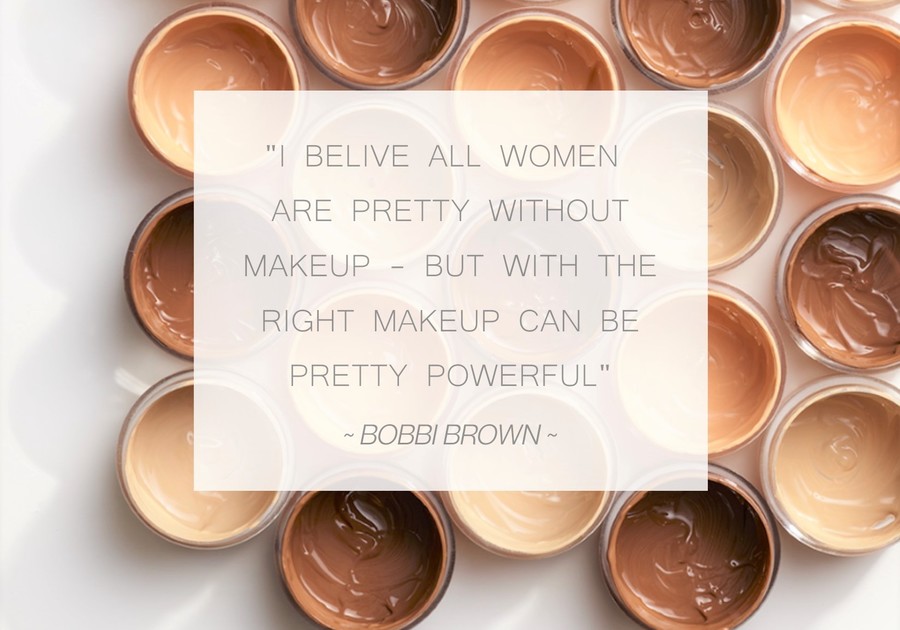Before I dive into this week’s topic, let it be known that whoever said that having more choices was a good thing probably wasn’t a woman trying to find the right foundation. Years ago when there were only a handful of shades you would just grab a bottle that looked somewhat close to your skin color and call it good, but now we have so many options to choose from that it can be downright overwhelming. And there are not only shades to choose from, but also all different types and formulas like creams, liquids, sticks, loose powders, pressed powders, and mineral powders. Plus on top of all that, there are BB creams, CC creams, and even DD creams?! Yes, you read this right, there are even alphabet creams! I know this is madness and the confusion needs to stop, so don’t get discouraged by all of these names, we will work through it together.
I’ll try to keep it short and sweet but I’m writing this article aspiring to help you understand what these products are so you can pick the right one.
Foundation alternative that offers light coverage while being kind to the skin. These are my go to’s and my personal favorite. They are great if you don't want a lot of coverage but simply need something to even out your skin tone. It will make you feel put together in a flash with very little application.
What are these alternatives?
Tinted Moisturizer: This is just like what it sounds; a moisturizer with just a hint of color. The upside to tinted moisturizer is that they offer “barely-there” coverage with a lightweight feel that perfects your skin’s tone. However, due to the lighter coverage, tinted moisturizer may not completely hide blemishes and imperfections. If you have oily skin, it’ll also cut down on the application process, combining two steps (moisturizer and foundation) in one. Tinted moisturizers usually contain effective sunscreen and are great for all skin types.
BB Cream: You’re probably familiar with BB cream, but did you know that it’s short for “beauty balm” or “blemish balm”? Usually offers a combination of SPF protection, priming, anti-aging, and skin-soothing benefits. They’re much lighter in weight than your average foundation, and they help smooth your skin’s complexion. It’s basically the Swiss army knife of beauty products.
CC Cream: Color-Correcting Cream is fairly similar to BB cream with one difference that makes them completely unique from one another: CC creams are meant to reduce the look of redness or discoloration. Kind of like a BB cream with the added benefit of concealer or color correction built-in. Their texture is typically lighter than BB creams because their main job is to act as a color corrector and not as a foundation.
DD Cream: "Dynamic Do-all" combines the power and benefits of both BB and CC creams. However, their primary focus is anti-aging.
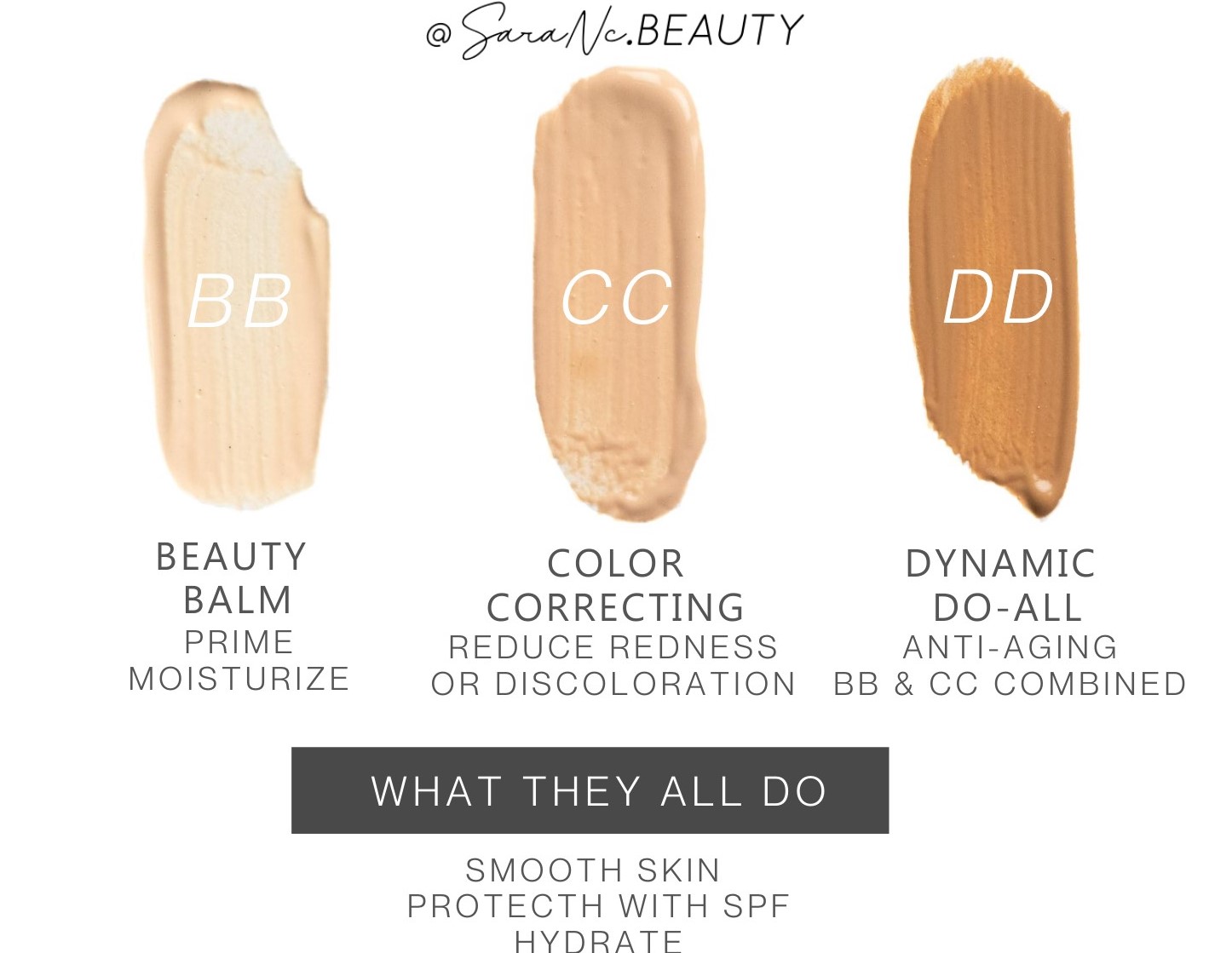 |
Unlike skin-improving Tinted Moisturizer, BB, or CC creams, foundations are used for skin coverage and evenness.
Cream: A cream foundation is a good choice for those with dry or mature skin. It provides medium to heavy coverage and helps the skin look soft and smooth. Cream-to-Powder: These go on as a liquid or crème, but then dry to a powder finish. If you like quick application and no-powder mess then this option is for you. Cream-to-powders also offer a bit more coverage than liquids or mousses, typically giving full coverage. | 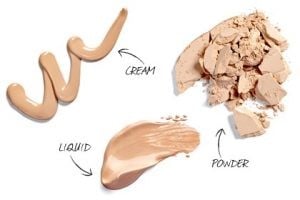 |
Liquid: They have been around for a long time and continue to be the top seller in the market. They’re flexible and natural-looking. Liquids also work well in color combinations, if you’re into making your own shades by mixing two or more colors.
Mousse or Whipped: These are foundations that simply have a little air whipped into them. The process makes the foundation lighter and smoother, so it applies to your skin a little easier.
Sticks: These come in solid form and have more of a drying effect, which may make them the best option for those with oily skin. They create full coverage and are good for covering scars and imperfections.
Powder: Loose-powder foundations are convenient and easy to apply. They help to control shine, but you must apply carefully as they can be too drying to your skin.
Pressed Powder: They come in a compact and act much like any pressed powder with a little extra coverage ability. They feel light on the skin and are great for women with normal to oily or combination skin. However, pressed powder is slightly heavier than loose powder and is often not recommended for acne-prone skin.
It’s important to note that these color cosmetics aren’t formulated with enough sun protection (it’s simply an added bonus!). So don’t swap these out for your daily sunscreen. Be sure to layer up with your favorite sunscreen and reapply throughout the day (at least every two hours) to help keep your complexion protected against the sun’s harmful rays. Better yet, wear protective clothing, a wide-brimmed hat, sunglasses, and avoid peak sun hours for even more protection.
Stay tuned next week. How to choose your foundation.
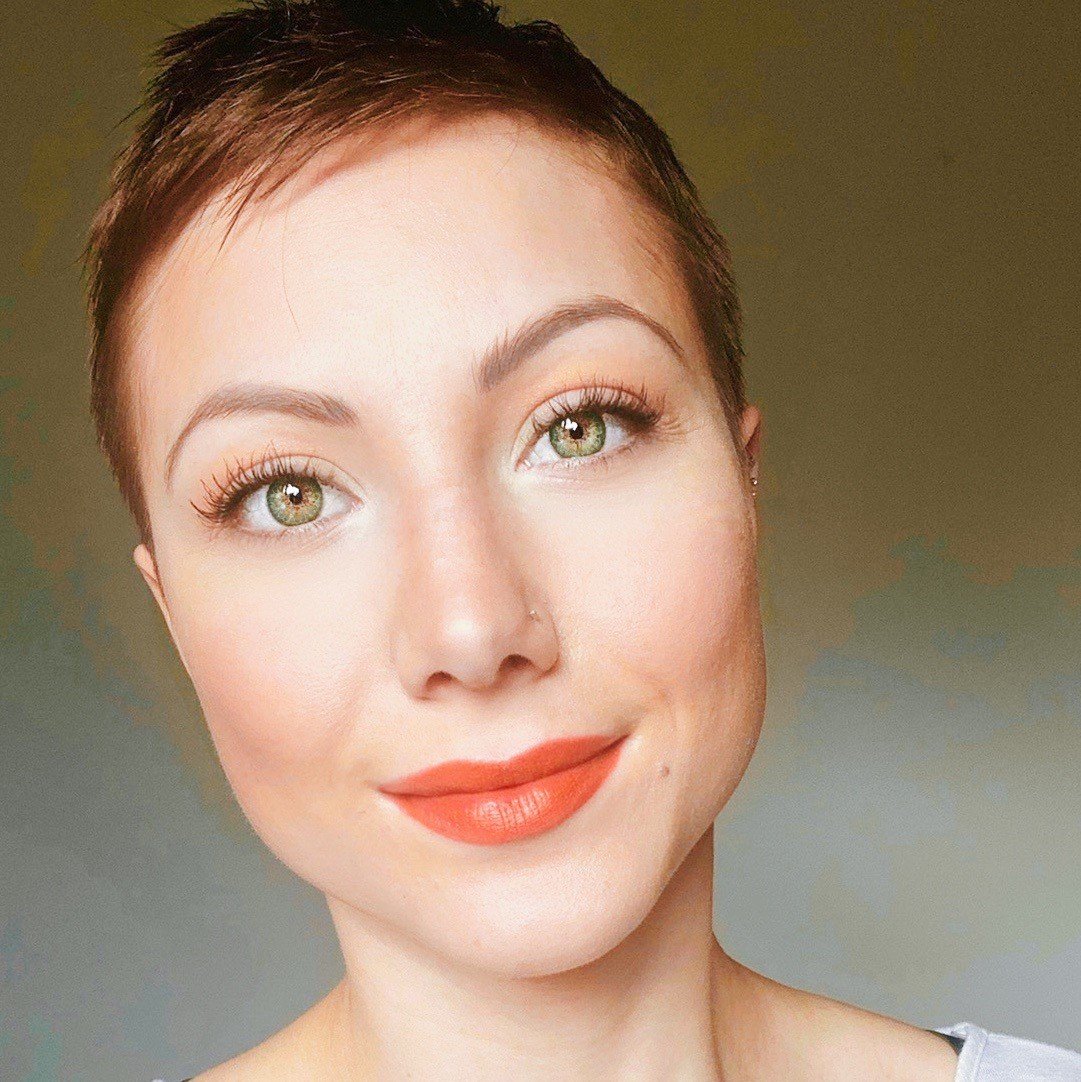
Sara was born and raised in the Czech Republic. In 2012, she moved to the US and worked many jobs but never felt fulfilled, which lead her to share her story and her passion for fitness (former fitness professional), nutrition tips (vegan) and makeup. She is also a new mom. Sara and her husband welcomed their baby boy in June 2020.
Sara is a makeup junkie at heart and decided to start her own business to help women look and feel their best. She loves supporting other business moms feel beautiful inside and out as they work to create their own destinies. You could find out more about her HERE.
Related articles:
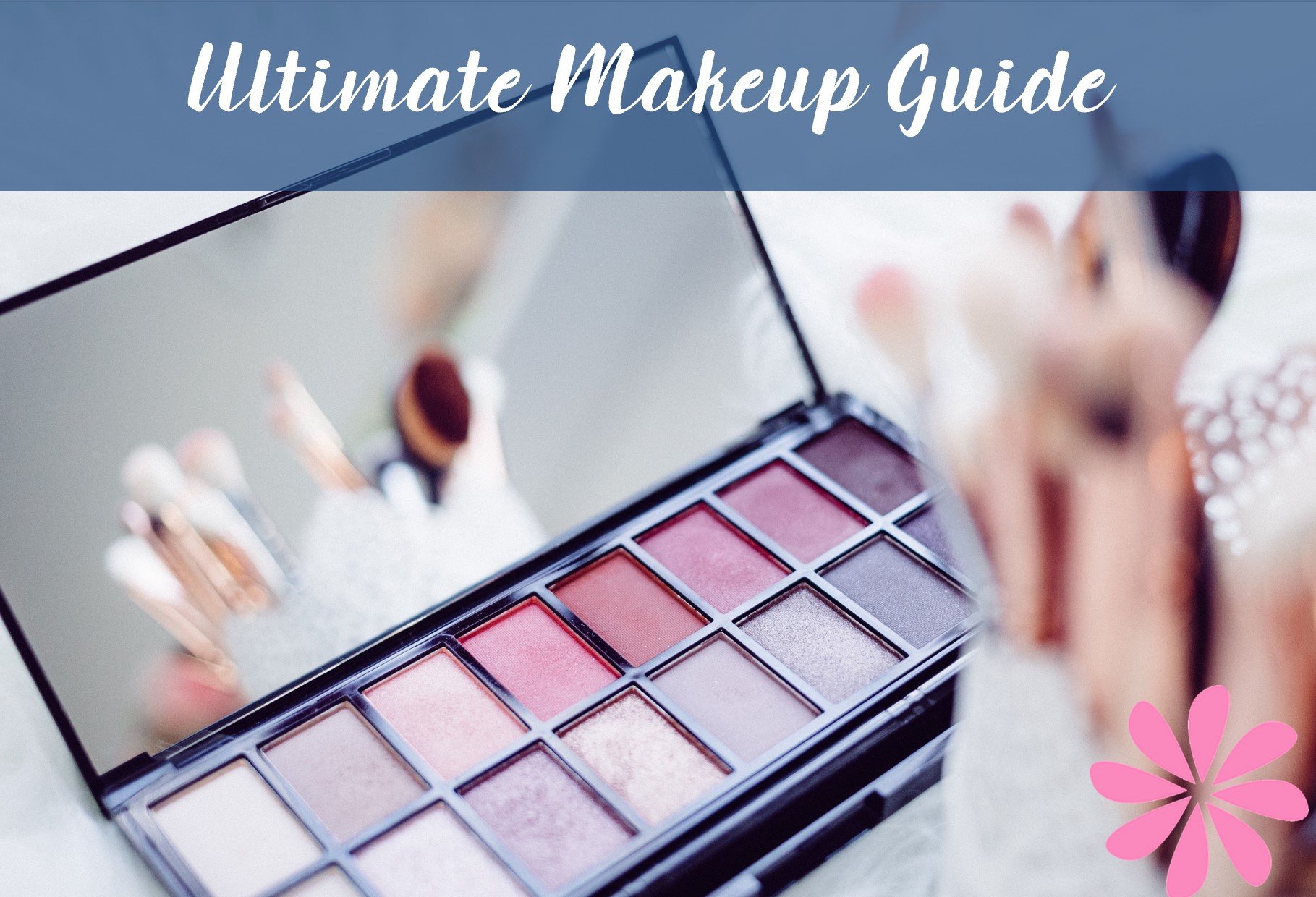 |  |  |
Macaroni Kid Lower Manhattan is the family fun go-to source for the latest and most comprehensive information in our area. Subscribe for FREE today and receive a one-year free parenting magazine subscription on us!

